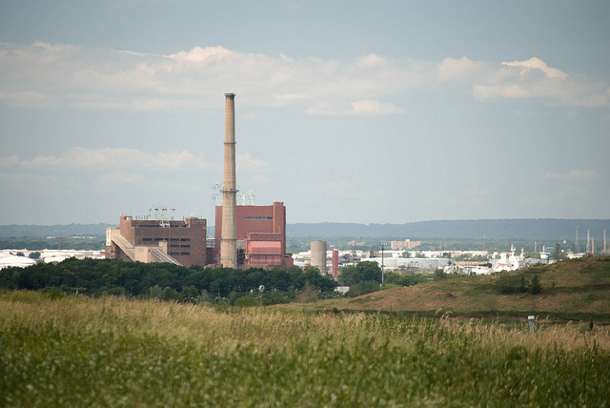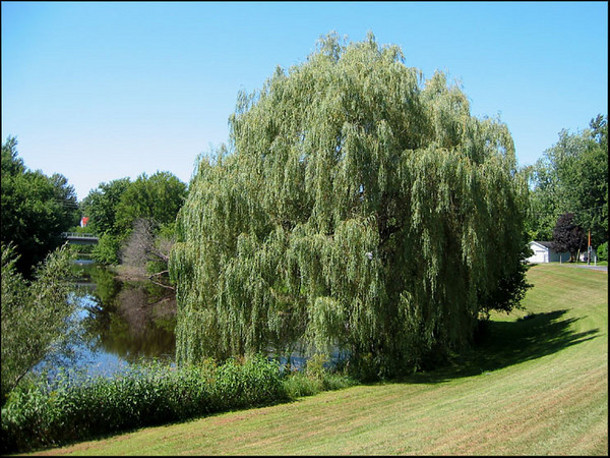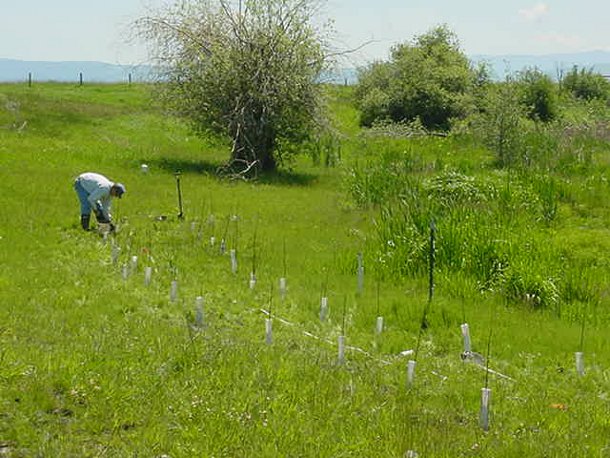
Phytoremediation is the use of green plants and their associated microorganisms to stabilize or reduce inorganic and organic contamination in soils and surfacewater or groundwater. In other words, the process of using trees and other plants as biological filters. It is also a key component of what we mean when we talk about ecosystem services and green infrastructure.
Highly effective phytoremediation requires “workhorse” plants. According to Ron Zalesny, a Team Leader in the Genetics and Energy Crop Production sector of the US forest service, hybrid poplars and willows are two examples. Phytoremediation is dependent on hydraulic uptake, therefore these workhorse trees are characterized by three primary qualities: high water usage (which can be a liability in certain climates), fast growth, and deep root systems. As pollutants are taken up through the roots, the trees either transform the contaminant or lock it up in their tissue.

Proper selection of tree species and variety/genotype is important to predicting phytoremediation efficacy. Without carefully considering species selection in the context of the specific site and the target contaminant, these systems may be unsuccessful. Clones are designed to perform the best, but if they’re being used across an expansive site it’s also important to maintain adequate genetic variation to minimize susceptibility to disease, insects, soil conditions, the changing environment, and so forth. Zalesny says that we can increase the success of these systems through proper genotypic screening and selection in combination with follow-up field establishment of favorable clones.
Phytoremediation has some very obvious applications, such as landfills and brownfields. It also has many potential applications in urban areas, where paved impervious surfaces and massive amounts of anthropogenic material and chemical substances – often spread through non point-source pollution – abound. Street trees in adequate soil volumes can help remediate a variety of pollutants, including Total Suspended Solids (TSS), metals, Nitrogen, Phosphorous, Pathogens, and Hydrocarbons. While they may not officially be phytoremediation projects, it’s easy to see how changing the way we plant street trees could bring greater economic and ecological value to urban areas.

Hybrid poplar planting during 2002 over a MTBE plume near Ronan, Montana.
There are some potential drawbacks to this technology. Some studies show that soil fauna can be negatively impacted, for example, although more research is required. Another drawback is that, while some trees used in phytoremediation projects can be harvested and reused, others must be disposed of (this depends on the type of contaminant being treated).
Lastly, trees dedicated to phytoremediation sites have a somewhat limited design life as far as pollutant processing is concerned. According to Zalesny, the ability to remediate declines with age, and a typical rotation for fiber is around 10 to 15 years. By 20 years, however, the phytoremediation capabilities of most trees will start to taper off and the tree may need to be removed. This was surprising to me – everything else I’ve read indicates that, until entering senescence, bigger trees are generally capable of greater environmental utility. Using that reasoning, bigger trees would provide more rather than less phytoremediation since they take up more water and have more roots for microorganisms to colonize.
I wrote to Zalesny asking for clarification about this point. He responded with the following:
The reason why phyto capabilities decline in the systems I spoke about is because these particular poplar and willow trees are typically grown as short rotation crops and, therefore, their lifespans are shorter than many other species. In addition, all trees have a growth curve that hits an inflection point at some point in time and, beyond this point, growth and vigor of the trees decline. We know that the trees’ capacity for phyto is highly correlated with tree vigor, so even though the tree is bigger when it is older the phyto may decline because overall growth rates decline.
We keep beating the drum of thoughtful, strategic, long-term thinking for urban tree planting. Willow and poplar are both “early successional,” short-lived trees, and unlikely to be used in urban contexts. Still, even on sites where phytoremediation is not a specific goal, designers can examine the layout and ecology of the site and consider the role soil and trees might play from the outset. Contamination is, sadly, a worldwide problem. While imperfect, phytoremediation is a promising and honestly green technology that can help address it.
You can learn more about phytoremediation and Zalesny’s work by listening to his recent webinar with the Urban Natural Resources Institute (UNRI).
Image of Freshkills Park in Staten Island by jamesdunham
Image of hydrid poplar planting by USGS
Image of hybrid willow by Metro Jacksonville






I agree fast growing trees work well for this, the Bigfoot hybrid willow has been used for phytoremediation, also. http://bigfootwillow.com/
That’s really interesting how tree vigor plays such a key role in how long a tree will actually be useful for sustained phytoremediation. Great article!